Jakhyung Monastery, also known as “Xia-qiong Temple”, is referred to in Tibetan as Jakhyung Theg Chen Yontan Dargyaling, meaning “Land of the Great Compassion and Merit of Jakhyung.”
The monastery was established in 1349 AD and is one of the oldest surviving monasteries in Qinghai (previously Amdo). It is situated on a cliff in the southern part of Chapu Township in Hualong Hui Autonomous County, about 95 kilometers from the provincial capital, Xining.
“Jakhyung” means “Great Roc” in Tibetan, and the name is derived from the shape of the mountain where the monastery is located, resembling a great bird poised to take flight.
The mountain rises majestically along the northern bank of the Yellow River, overlooking the winding twists of the Yellow River and offering views of countless mountains and valleys.
To the east, west, and north, the peaks are interwoven, while the south features steep cliffs that are remarkably sheer and perilous.
From the southern perspective looking north, Jakhyung Monastery is positioned precisely on the right shoulder of the “Great Roc.”
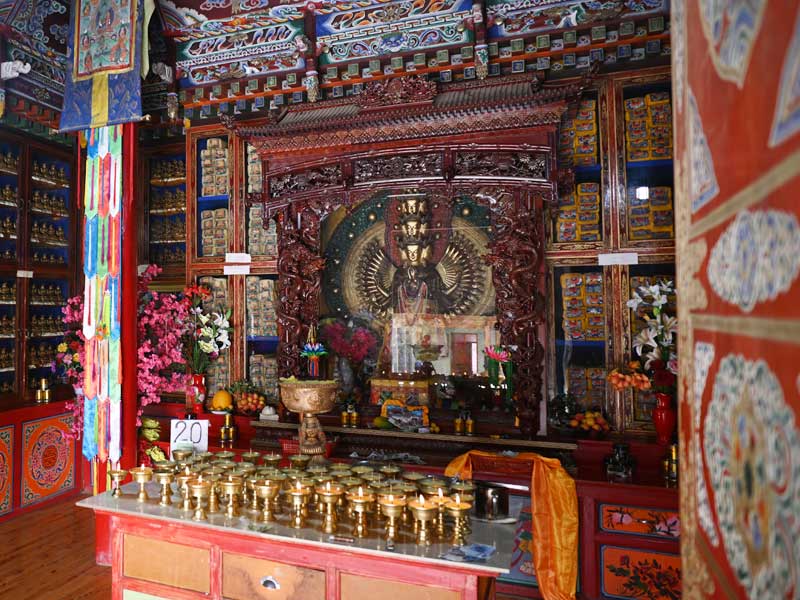
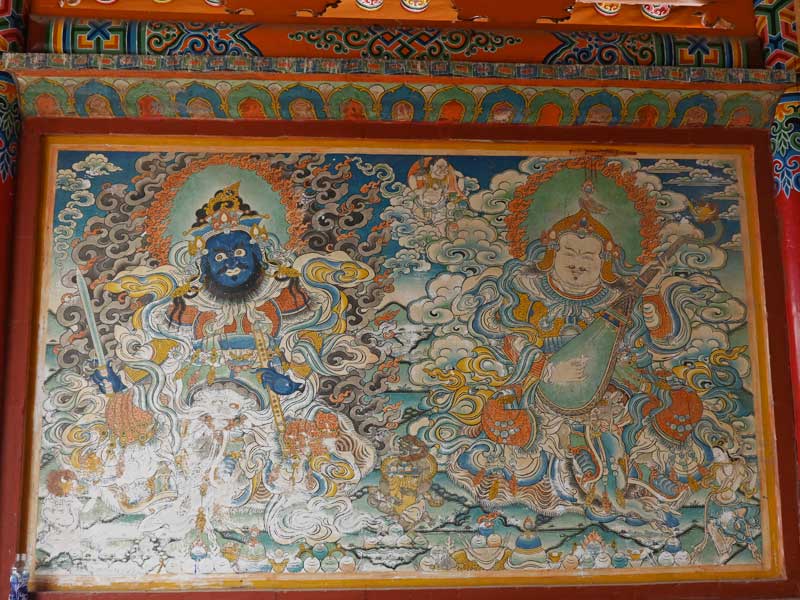
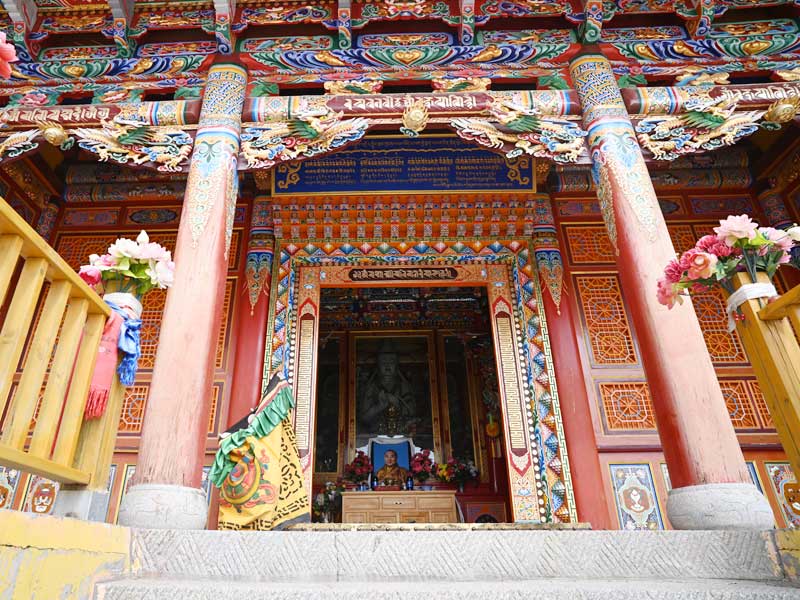
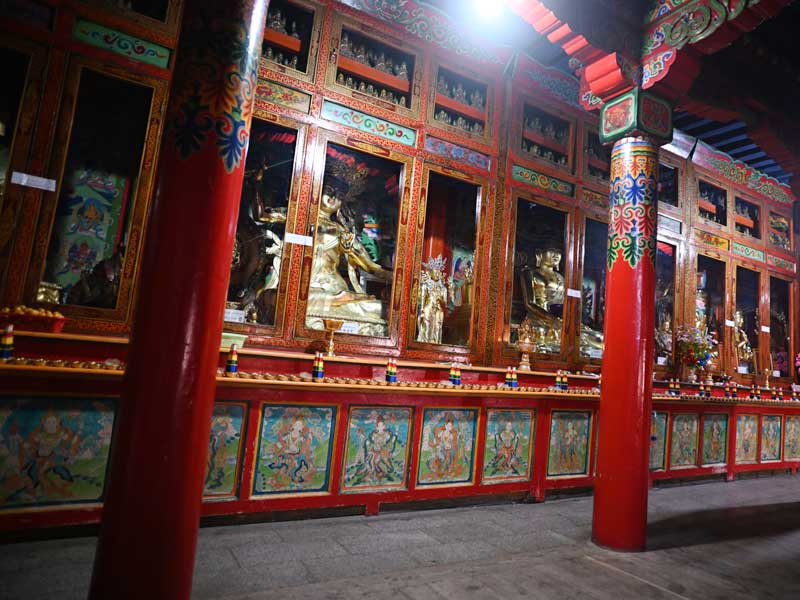
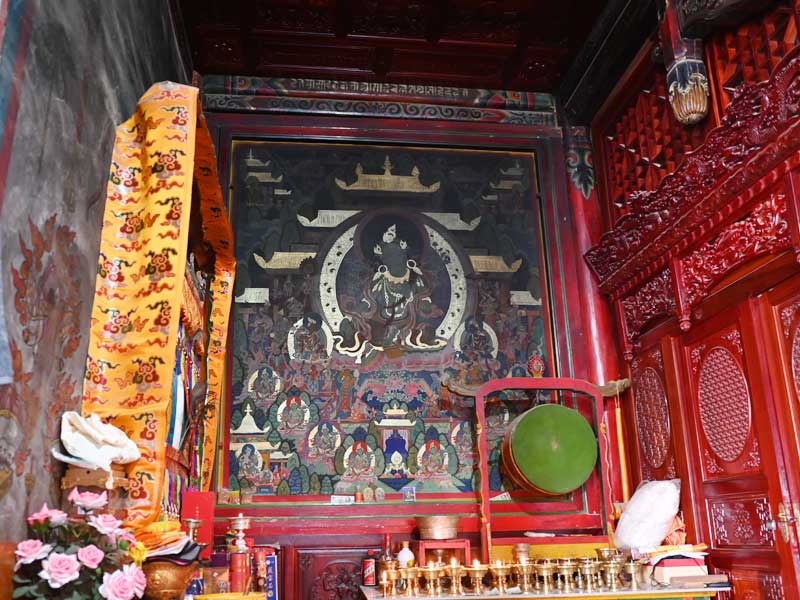
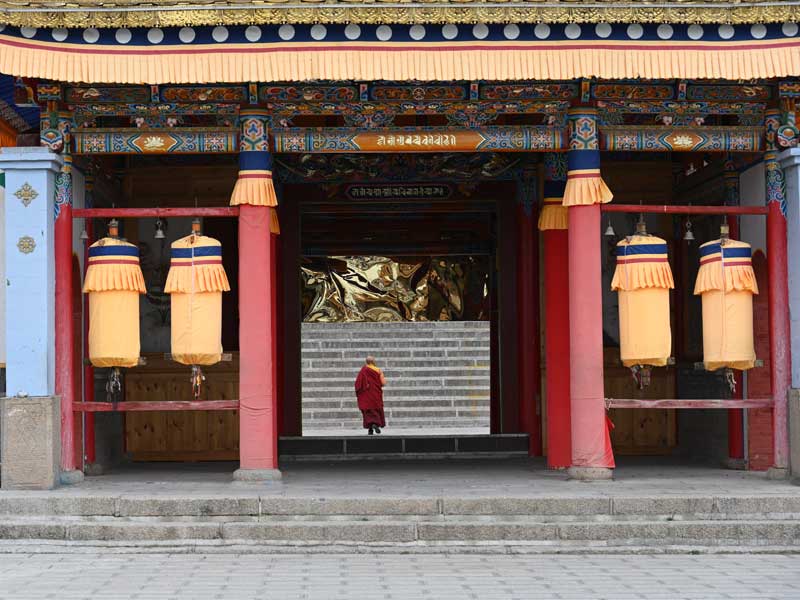
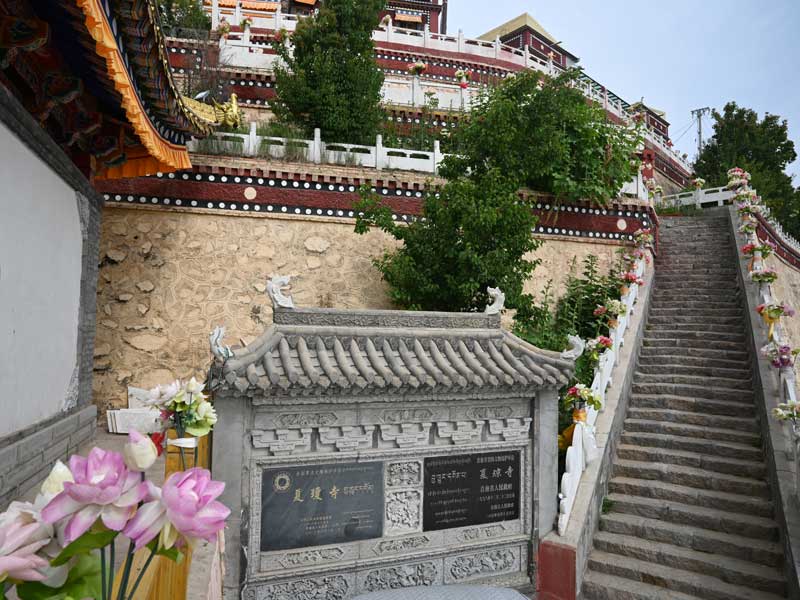
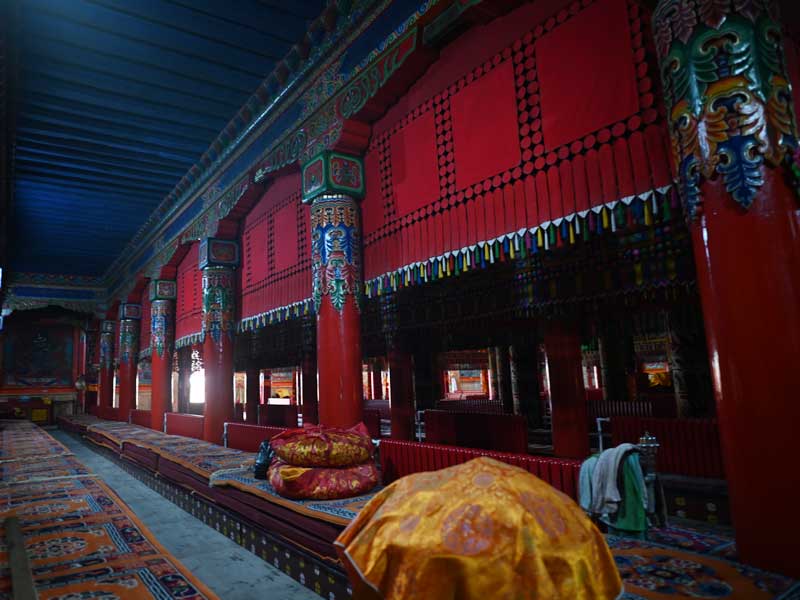
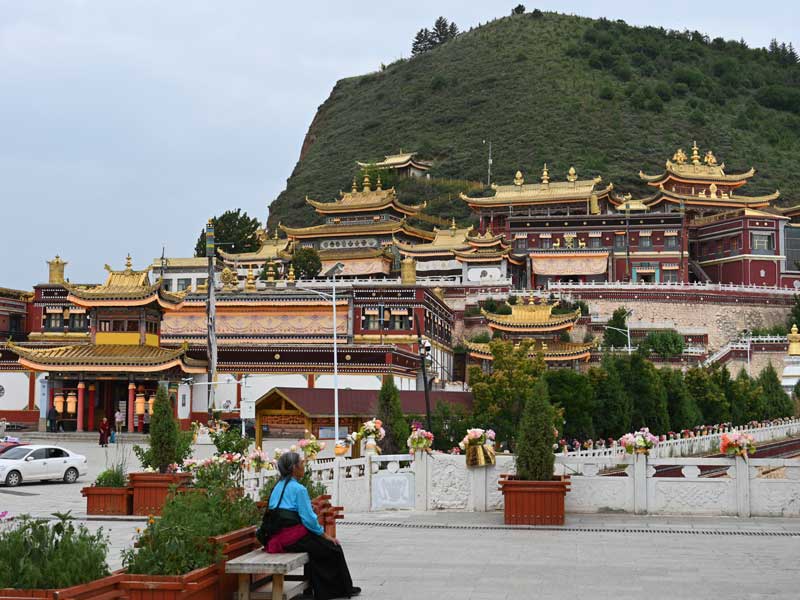
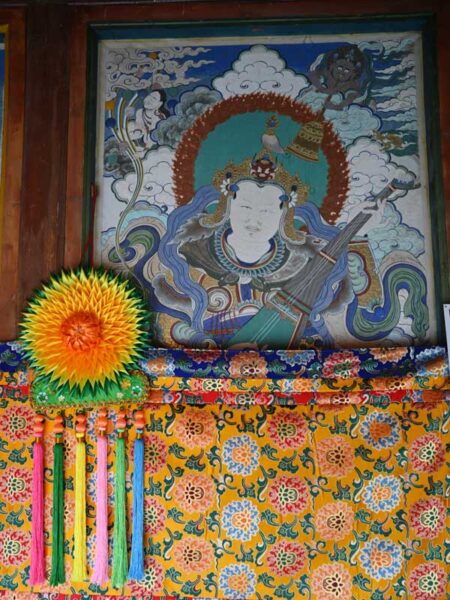
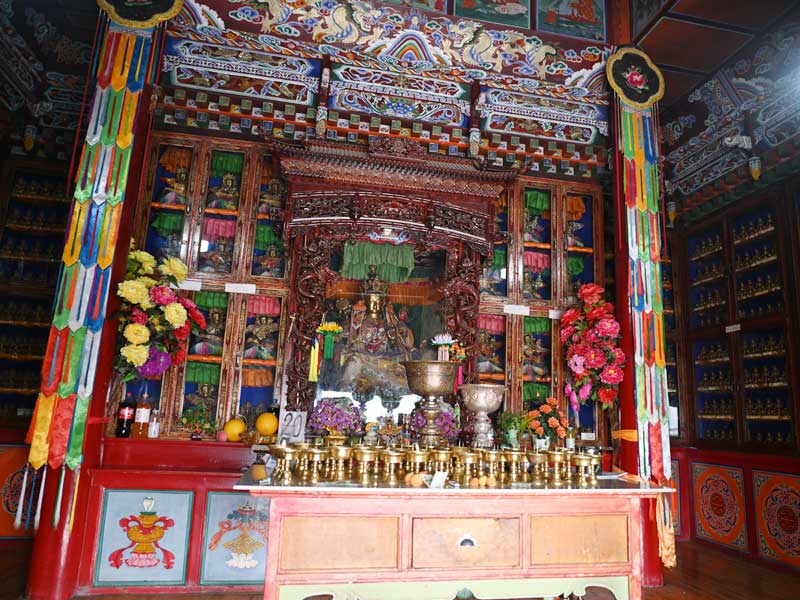
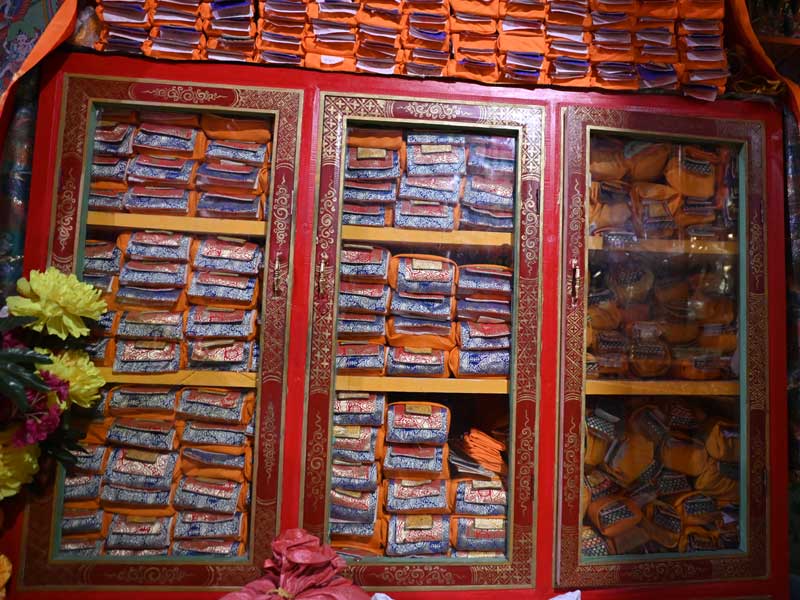
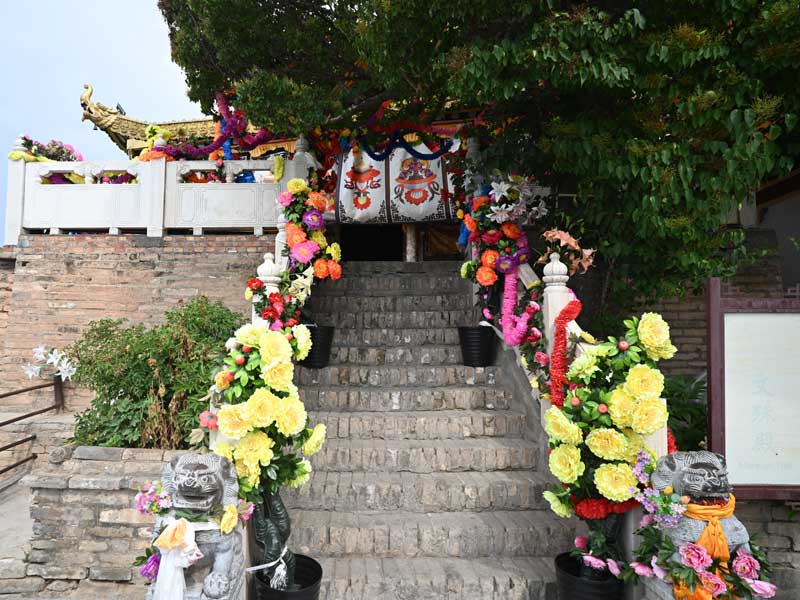
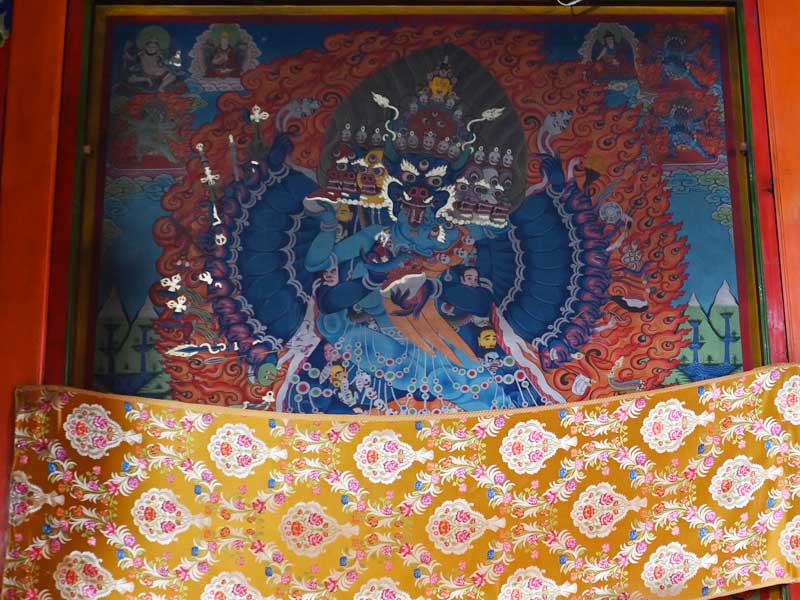
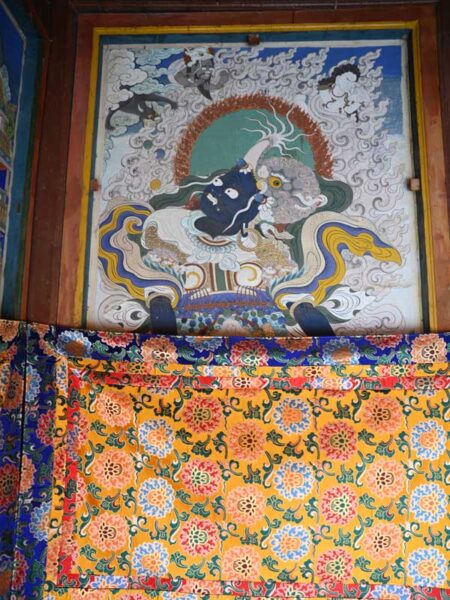
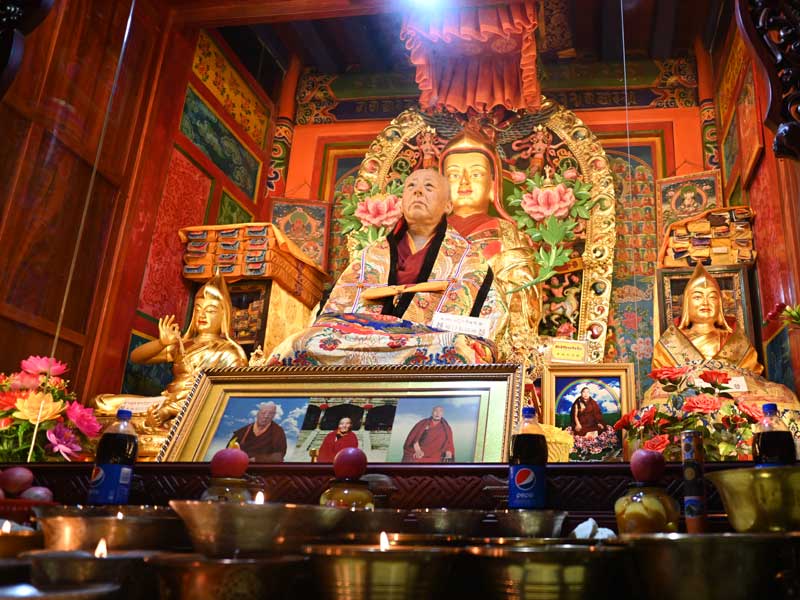
Brief
Jakhyung Monastery was originally a Kadampa sect monastery of Tibetan Buddhism but later became affiliated with the Gelug sect, adopting the curriculum from Sera Monastery and becoming part of its system.
The monastery’s founder was “Chujie Dunzhu Renqin” (1305–1385 AD), also known as “Chujie Dorje Rinpoche,” who hailed from the Xiabulang area in present-day Tongren County. He studied at Tibet’s Nyethang and Nathang Monasteries and later became the abbot of Lintao Monastery. He went on to establish Xiabulang Monastery in Tongren, Angla Sekang in Jianzha, and Jakhyung Monastery.
Jakhyung Monastery is renowned because Tsongkhapa, the founder of the Gelug (Yellow Hat) Pa of Tibetan Buddhism, studied there in 1363 AD and took monastic vows. Hence, it is considered the birthplace of the Gelug tradition.
Historically, the monastery was famous for its strict discipline and for producing many distinguished monks. The first group of scholars from the monastery became tutors to the 7th and 8th Dalai Lamas, the 9th Panchen Lama, and the 3rd Changkya Rinpoche.
Notable figures include the tutor of the 7th Dalai Lama, “Awang Chöden” (1677–1751 AD); the tutor of the 8th Dalai Lama, “Awang Chö” (1707–1778 AD); and the tutors of the 9th and 10th Dalai Lamas, “Awang Nenzha,” as well as “Jinpa Gyatso,” the 46th Ganden Tripa (Head of the Gelug pa), all of whom were high monks from Jakhyung Monastery.
During the Qing Dynasty (1636–1912 AD), Jakhyung Monastery had over 3,000 monks and 25 lama residences (Ladrang).
The monastery originally had 27 large and small building complexes covering over 200,000 square meters, with more than 2,260 rooms, including 26 wooden towers. The most famous lama residences were “Deyang Tsang,” “Jiansi Tsang” (also known as “Weishi Tsang”), “Khenpo Tsang,” and “Shamar Tsang,” which formed the monastery’s four major tulku (reincarnated lama) systems.
There are also historical relics such as the “Manjushri Meditation Cave” and the “Maitreya Gazing at the River” statue. Sacred items housed at the monastery include the “Lokeshvara Statue” said to contain relics and the remains of Atiśa, an ancient sandalwood pagoda containing relics of Shakyamuni Buddha, Gushri Khan’s sword, Tsongkhapa’s gilded bronze statue, and the Kangyur scriptures written in gold ink.
Most notably, the stupa hall of the monastery’s founder, “Dunzhu Renqin” Rinpoche, is particularly magnificent.
Architecture and Collections
Jakhyung Monastery now covers a total area of 270,000 square meters. Throughout history, the 3rd, 7th, and 13th Dalai Lamas donated thousands of taels of gold to embellish the monastery’s halls, making the temple even more splendid and radiant.
Since its founding, Jakhyung Monastery has successively built eleven halls, including the Manjushri Hall, Maitreya Hall, Golden Roof Hall, Atiśa Hall, Vajra Buddha Hall, Zhiza Buddha Hall, Incense Offering Hall, Kṣitigarbha Bodhisattva Hall, Maitreya Overlooking the River Hall, Mountain Buddha Hall, and Protector Deity Hall. These structures form an ancient architectural complex that blends Chinese and Tibetan artistic styles. The overall layout is solemn and majestic, with a grand and awe-inspiring presence.
Some of the early buildings of the monastery include the Kangkang Qingmo (Great Protector Hall) and the Lhakang Qingmo (Great Buddha Hall).
The main existing structures are the Great Assembly Hall, the Mahavira Hall, the Manjushri Hall, and the Great Stupa Hall. Additionally, the monastery houses several academic institutions, such as the Sutra School, Tantra School, Kalachakra School, Vairochana Manifestation School, and Medicine School.
The Great Assembly Hall is imposing, with three grand double doors that evoke a sense of sanctity.
Within the Great Stupa Hall, the relics of Dunzhu Renqin continue to emit their sacred light, attracting Buddhist followers from home and abroad for worship.
The monastery currently holds more than a thousand Buddhist scriptures, with precious editions such as the Kangyur, Tengyur, and the collected works of Tsongkhapa.
Monastic Structure
In October 1772, the 3rd Chöpzang Rinpoche, “Awang·Thubten Wangchuk” (1725–1796 AD), became the 39th abbot of Jakhyung Monastery. He donated over 4,000 taels of silver to construct the monastery’s main assembly hall, which features 128 large pillars. From that time on, successive Chöpzang Rinpoches became the monastery’s spiritual leaders.
According to the History of Religion and Politics in Amdo, Jakhyung Monastery oversaw more than 20 subordinate monasteries, while the Jakhyung Monastery Chronicle states there were 25. These monasteries were mainly located in the western part of Hualong County.
By the late 1940s, some of these monasteries had ceased to exist, with 18 typically recognized as the number of affiliated monasteries, divided into upper and lower sections. Monasteries in the Zhiza and Chafu regions were part of the upper section, while those further south to Yishizha Monastery were part of the lower section.
The “Xiangride Panchen Residence” was originally granted to Jakhyung Monastery by the 6th Panchen Lama. However, due to its distant location, the monastery later returned the residence to the Panchen Lama.
Jakhyung Monastery originally had one large assembly hall, which served as the Exoteric Buddhist School. There were also two other colleges: the Gyupa Dratsang (Esoteric School) and the Manba Dratsang (Kalachakra and Medicine School).
The Exoteric School was directly managed by the abbot, while the chief position of the Gyupa Dratsang was called “Gyupa Benlo,” and the head of the Manba Dratsang was known as the “Manba Lama.”
The Manba Lama was selected from among the scripture teachers (known as “Wongtse”). When the Gyupa Benlo became the abbot, the Manba Lama could then assume the role of Gyupa Benlo.
The abbot represented the four major tulku lineages of Deyang, Jiangsi, Khenpo, and Shamar, who collectively oversaw all the monastery’s affairs. Four chief administrators worked under them:
- Wenpo – Deputized for the abbot in their absence, managing all matters.
- Sengguan – Responsible for recruiting new monks and overseeing the monks’ adherence to religious rules.
- Sengkang – Managed the affiliated monasteries and their respective reincarnated lamas.
- Gekan – Supervised teaching activities and ensured that monks were diligent in their studies.
Below the four chief administrators were two “Gyasok” assistants, who helped with daily matters such as serving tea. There were also 18 “Yuba,” of whom two managed the monastery’s warehouses, while the remaining 16 assisted each administrator and handled disputes among the monks.
Beneath the “Yuba” were several “Ju-huan” (similar to group leaders), each overseeing around 10 households of monks. In the 1950s, there were 16 Ju-huan.
Brief History
In 1385 AD, after the death of Dunzhu Renqin, his body was placed in a brick stupa at the monastery, and a stupa hall was built.
In 1583 AD, on his way to Inner Mongolia to attend the funeral of Altan Khan, the 3rd Dalai Lama, Sonam Gyatso, stopped at Jakhyung Monastery and donated gold to transform the stupa into a gilded copper stupa.
In 1623 AD, the abbot of the monastery, Jampa Lingpa·Dampa Renqin, established the Exoteric School.
In the early 18th century, the 7th Dalai Lama, Kelsang Gyatso, donated gold to cover the stupa hall with a golden roof. Additionally, the Manjushri Hall, where Dunzhu Renqin and Tsongkhapa once resided and practiced, was also notable.
In 1747 AD, Manrenba·Awang Tashi, a high monk from the Lower Tantric College in Lhasa, established the Esoteric School.
In 1788 AD, Emperor Qianlong of the Qing Dynasty bestowed upon Jakhyung Monastery a plaque inscribed in Chinese, Tibetan, Mongolian, and Manchu, naming it “Fajing Temple” with the golden characters for “Land of Mahayana Flourishment.” The emperor also allocated funds for the monastery’s upkeep annually.
In 1797 AD, the 3rd Sinar Rinpoche, Chökyi Drakpa (1734–1802), founded the Medicine School, which was later converted into the Kalachakra School in 1802 AD.
In 1958, according to a census on September 5, the monastery had 887 monks, 4,131 rooms, 93 horses, 53 mules, 319 cows, 280 sheep, 186 acres of irrigated land, and 1,622 acres of dry land. The monastery included one large assembly hall, two small assembly halls, 11 Buddha halls, 61 public monk quarters (Jiwa houses), one large kitchen, and a total of 488 structures.
After 1958, the monastery was preserved as a religious site, but most of its buildings were destroyed or dismantled.
In 1963, the monastery still had 121 monks, but by November of that year, the number had decreased to 94. The monastery at that time had 1,106 rooms, 32 cattle, 12 donkeys, 28 goats, 23 pigs, and 200 acres of land. The monastery was closed later that year, and the monks were sent back to their hometowns. Those who were homeless were placed in different production teams within the Chafu Commune.
In 1980, the monastery was approved for reopening, and under the leadership of “Sharidong Rinpoche” and “Chöpzang Rinpoche,” it was gradually restored to its former dignity and splendor.



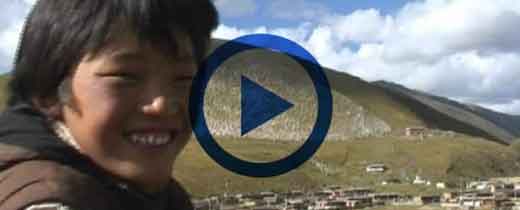
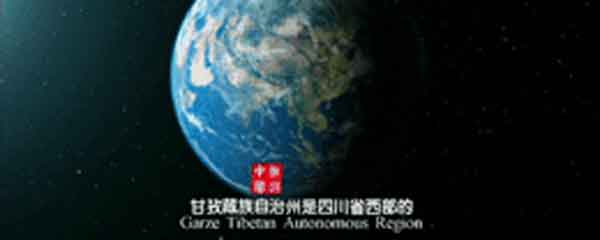
Leave a Reply